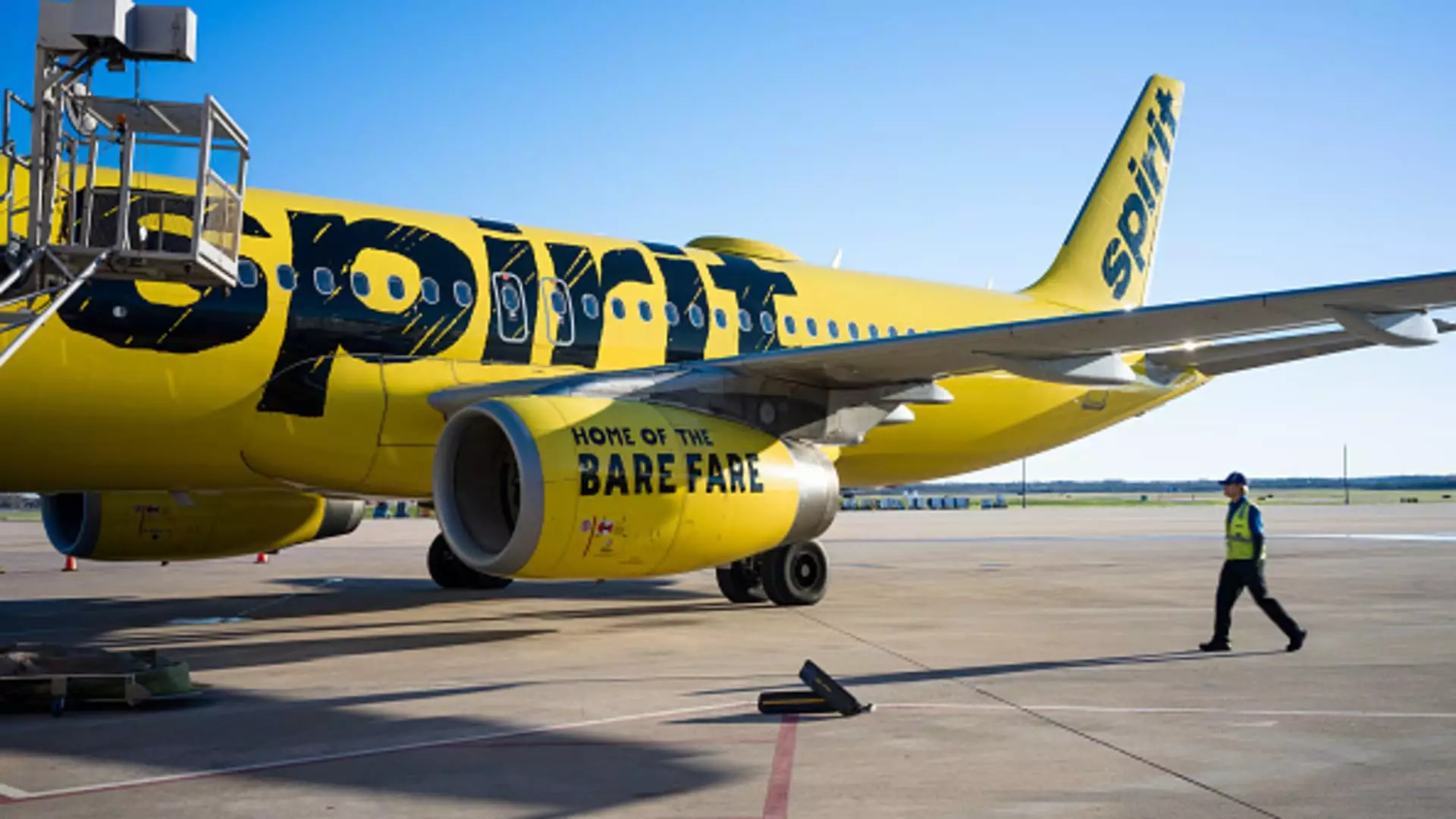On Friday, Spirit Airlines announced a crucial development in its financial strategy by securing an extension to its debt refinancing timeline until December. This announcement comes just hours before an impending deadline that could have exacerbated the airline’s precarious position. The company had recently utilized its entire $300 million revolving credit facility, which underscores the urgency of its financial needs. Spirit expects to maintain over $1 billion in liquidity by year-end, a figure that may serve as a temporary cushion as it navigates its ongoing financial challenges.
The fact that Spirit is actively engaged in discussions with its senior secured noteholders and convertible senior noteholders indicates a concerted effort to address its looming financial obligations. The original deadline for debt negotiations was initially set in September, and despite multiple extensions, the persistent delays highlighted the company’s struggles and the gravity of its situation.
In tandem with its financial maneuvers, Spirit’s stock performance has taken a notable downturn. On the same day of the refinancing announcement, the airline’s shares hit a new low, plummeting by approximately 3% to below $1.50 each. This sharp decline represents a staggering drop of over 90% in the company’s stock valuation this year alone, with nearly 40% of that deterioration occurring in October. Such a dramatic decrease in stock price raises serious concerns about investor confidence and the overall market perception of Spirit Airlines.
The operational landscape for Spirit has become increasingly challenging. In a bid to conserve cash, the airline has resorted to furloughing workers, dramatically reducing its schedule, and deferring aircraft deliveries, actions that indicate a dire need for financial prudence. Compounding these issues, many of Spirit’s aircraft remain grounded due to an ongoing engine recall from Pratt & Whitney, which has further limited its operational capacity. Such factors not only hinder revenue generation but may also damage the airline’s reputation and customer loyalty.
Spirit has reported weaker than anticipated booking trends, an alarming indicator of diminishing consumer demand. Moreover, the airline’s attempted acquisition by JetBlue Airways faced significant legal challenges, ultimately culminating in a federal judge blocking the merger on antitrust grounds. This development not only stifled Spirit’s growth prospects but also emphasizes the regulatory hurdles that can complicate strategic expansions in the airline industry.
Given the confluence of dwindling stock values, operational setbacks, and unsuccessful merger attempts, the looming possibility of bankruptcy filing hangs over Spirit Airlines. The Wall Street Journal reported earlier this month that such a drastic measure is under consideration, which would mark a profound turning point for the once-thriving carrier. Stakeholders and industry watchers are left to ponder whether Spirit can navigate these turbulent waters or if bankruptcy is an inevitable fate. The outcome of ongoing negotiations with creditors and the ability to stabilize operations will play a critical role in determining Spirit’s future viability.

